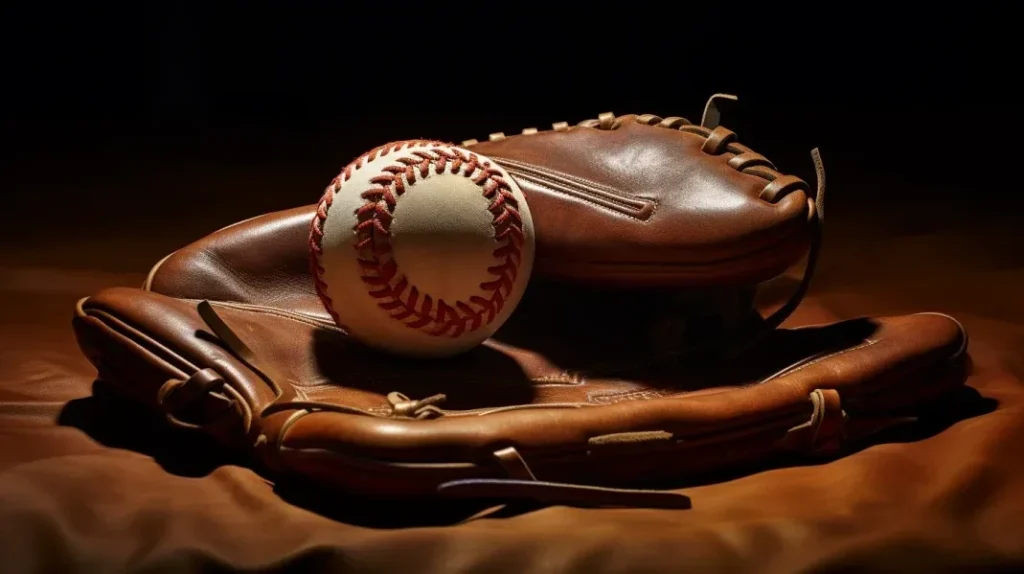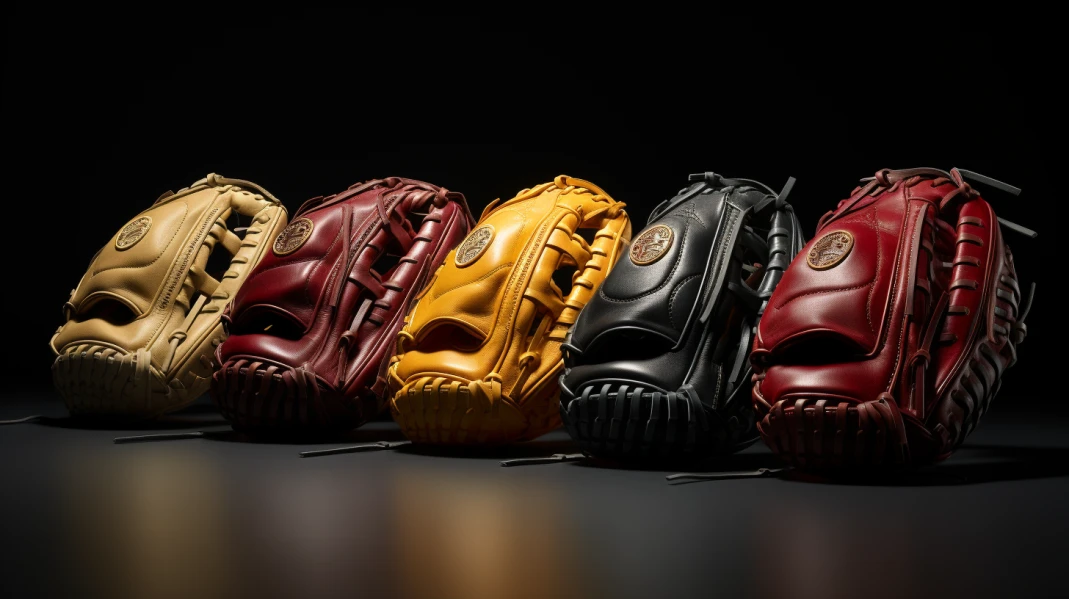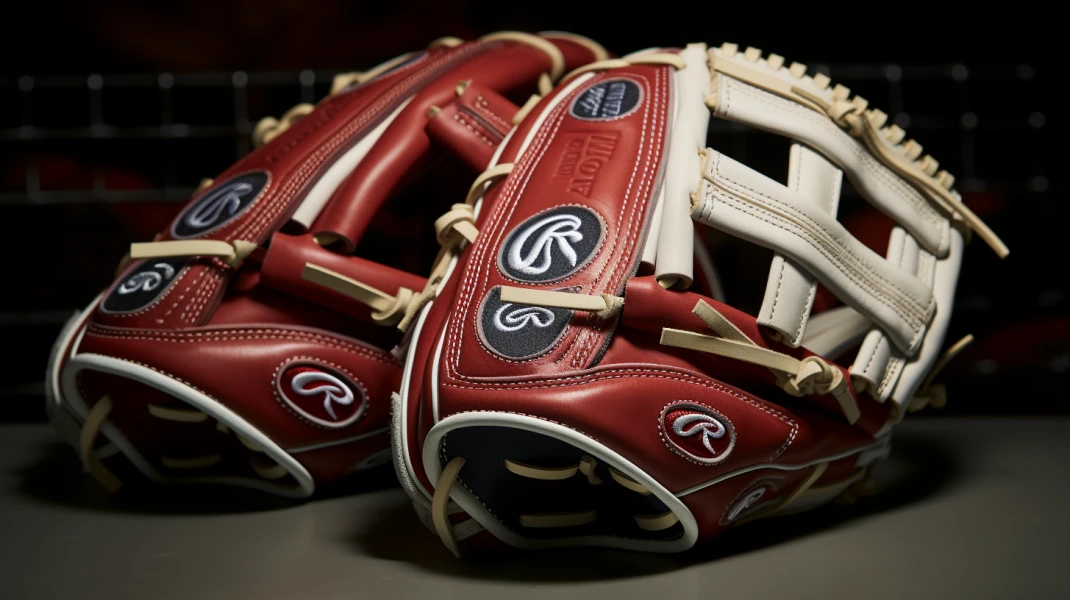As you take the mound, ready to showcase your pitching prowess, you know that the perfect glove can be your secret weapon. It’s like a trusted companion, an extension of your skill and determination.
But with so many options out there, how do you find the best pitching baseball glove that will elevate your game to new heights?
In this discussion, we will unveil the top contenders, uncover the key attributes that set them apart, and reveal the secrets to unlocking your true pitching potential.
So, prepare to step into the world of pitching baseball gloves and discover the glove that will make you pitch perfect.
Table of Contents
ToggleKey Takeaways
- Top pitching gloves are incorporating innovative materials to enhance durability and flexibility.
- Customization is becoming increasingly crucial in pitching gloves to cater to individual pitching styles.
- Pitching gloves are part of the broader conversation about sports equipment evolution, athlete performance optimization, and ergonomic design.
- Understanding the specific needs of pitchers at various levels is crucial in the development and selection of pitching gloves.
Top-Rated Pitching Baseball Gloves Models
When it comes to finding the best pitching glove for your game, look no further than these top-rated models that combine durability, performance, and comfort for optimal pitching success.
The top-rated pitcher gloves on the market are constructed using high-quality baseball glove leather specifically designed for pitchers. This type of leather is known for its durability and ability to withstand the repetitive motions of pitching.
Additionally, these gloves offer various webbing types, such as open-back or closed-back, to cater to individual preferences and provide added support.
One notable feature of these top-rated gloves is their customizability. Pitchers can personalize their gloves by selecting the preferred size and color and even adding their name or number. This customization allows pitchers to feel a sense of ownership and confidence in their equipment.
Clayton Kershaw, a renowned name in baseball, is known for his exceptional skill and choice of equipment, which plays a significant role in his performance season after season. While Kershaw’s role as a pitcher doesn’t typically involve using an outfield glove with a deep pocket, the quality and type of glove he chooses are crucial for his game.
Players like Kershaw often have a favorite glove, one that offers the perfect balance of comfort, control, and durability. Brands like WILSON A2000 are popular among professional players for their high-quality craftsmanship and performance. These gloves are designed to withstand the rigors of a long baseball season, providing consistent performance and a fantastic feeling on the field.
The glove type, patterns, and recommendations are often tailored to the needs of the player, with some, like Kershaw, possibly preferring custom or specific models like comfortable SSK gloves or Maestro gloves. These specialized gloves are crafted to enhance a player’s abilities, offering increased glove control and a fit that feels almost like a natural extension of the hand.
In summary, for elite athletes like Clayton Kershaw, choosing the right glove is a critical decision that impacts their performance in every game. The combination of quality, comfort, and control is key in selecting a glove that meets the demands of top-level baseball.
Key Factors for Effective Pitching Glove Performance
For pitchers, the performance of their glove is not just about comfort – it’s a critical factor in their ability to play at their best. Understanding the key elements that contribute to a practical pitching glove is essential. Here’s a detailed look at these crucial factors:
| Key Factor | Details and Importance |
|---|---|
| Glove Durability for Pitchers | Pitchers require gloves that can withstand intensive use throughout a season. Durability is crucial to ensure the glove maintains its shape and functionality over time. Advanced materials like high-quality leather or durable synthetics are often used in premium gloves to achieve this. |
| Advanced Materials in Pitcher Gloves | The use of cutting-edge materials is vital. High-quality leathers provide longevity and a better feel, while advanced synthetics can offer benefits like reduced weight and increased moisture resistance. |
| Ergonomic Design for Pitching Gloves | An ergonomic glove enhances comfort and ensures a natural fit. This allows pitchers to maintain a consistent grip and control over their pitches, reducing the risk of injury and improving overall performance. |
| Grip Technology in Pitching Gloves | Enhanced grip technology, such as specialized grip patterns or innovative materials on the inner lining of the glove, can significantly improve a pitcher’s ball control. This technology helps in preventing slippage, offering pitchers greater command over their throws. |
Each of these factors plays a unique role in the overall effectiveness of a pitching glove. By combining durability with advanced materials, ergonomic design, and grip technology, a pitching glove can significantly contribute to a pitcher’s confidence and success on the mound.
Evaluating Different Leather Types for Pitching Gloves
Selecting the right leather type for pitching gloves is a crucial decision for pitchers at any level. The leather not only affects the glove’s durability and functionality but also influences the comfort and control during pitching. Here’s a comprehensive evaluation of different leather types used in pitching gloves:
- Steerhide Leather:
- Characteristics: Steerhide is known for its strength and durability. It’s one of the most common leathers used in high-quality gloves.
- Performance: Offers excellent longevity and retains its shape well, but can be stiffer and require a more extended break-in period.
- Suitability: Ideal for pitchers who prefer a sturdy glove that lasts for multiple seasons.
- Kip Leather:
- Characteristics: Kip leather comes from younger cattle, making it lighter and more supple than steer hide.
- Performance: Provides a quicker break-in period and is generally more comfortable from the start while still maintaining good durability.
- Suitability: Great for pitchers looking for a lighter glove with a faster break-in time.
- Full-Grain Leather:
- Characteristics: This is leather in its most natural form, retaining more of the hide’s original texture.
- Performance: Known for its ruggedness and can take longer to break in. It’s very durable and forms a deep pocket over time.
- Suitability: Suitable for pitchers who don’t mind a longer break-in process for a glove that lasts.
- Synthetic Leather:
- Characteristics: Not as durable as genuine leather, but lighter and easier to break in.
- Performance: Less durable but offers a comfortable fit and feel from the outset.
- Suitability: A good option for younger players or those looking for an affordable, easy-to-use glove.
- Impact on Glove Size and Break-in:
- Glove Size: The type of leather can affect the overall fit and feel of the glove, influencing the size choice.
- Break-in Methods: Different types of leather require different break-in techniques. For example, kip leather may need less conditioning compared to steer hide.
- Preferences of Professional Pitchers:
- Professional pitchers often have specific preferences based on their playing style and comfort. Some may prefer the durability and firmness of steer hide, while others might opt for the lightness and flexibility of kip leather.
Preferred Glove Models of Professional Pitchers
Professional pitchers have their own preferred glove models that they rely on for optimal performance on the mound. These models are often chosen based on personal comfort, fit, and functionality. Here are some popular glove models that professional pitchers favor:
| Glove Model | Brand | Features |
|---|---|---|
| Rawlings Pro Preferred | Rawlings | Full-grain Kip leather, Pro H web, padded thumb sleeve |
| Wilson A2K | Wilson | Pro Stock Select leather, dual welting, Dri-Lex wrist lining, closed pro-laced webbing |
| Mizuno Pro | Mizuno | Deguchi Kip leather, PowerLock wrist strap, Tartan web, Shika Palm liner |
| Easton Professional Collection | Easton | Premium Reserve USA steer hide, hand-oiled leather, Steer Hide 2X palm liner, single post web |
These glove models adhere to professional sports equipment standards and are designed to meet the specific needs of pitchers. They offer features such as durable leather, reinforced webbing, and wrist support for enhanced performance and comfort. Additionally, players can take advantage of glove customization services offered by manufacturers to tailor their gloves to their individual preferences.
In the event of wear and tear, professional pitchers can rely on baseball glove repair services to maintain the longevity of their preferred glove models. Player equipment preferences play a crucial role in determining the success of a pitcher, and having a reliable and well-suited glove is essential for delivering accurate and effective pitches.
Enhancing Pitching Performance Through Glove Customization
To optimize your pitching performance, glove customization can play a crucial role in achieving a personalized and comfortable fit that enhances your control and accuracy on the mound. Customizing your pitching glove allows you to fine-tune its features to meet your specific needs, resulting in improved glove balance and control.
A critical aspect of glove customization is glove maintenance for pitchers. Regularly cleaning and conditioning your glove helps maintain its performance and durability. It also ensures that the glove retains its shape, preventing any loss of control or accuracy while pitching.
Another critical factor to consider is the impact of glove design on pitching. The design of the glove, including the webbing type and pocket depth, can significantly affect your ability to grip and release the ball effectively. By customizing these features, you can optimize your grip and ensure a seamless transfer of power from your hand to the ball.
Glove balance and control are crucial for pitchers. By customizing the weight distribution and finger stalls of your glove, you can achieve a balanced feel that enhances your control over the ball. This fine-tuning allows you to make precise adjustments to your pitches, resulting in improved accuracy and consistency.
The Role of Glove Weight and Balance in Effective Pitching
In baseball, especially for pitchers, the weight and balance of a glove can significantly influence performance on the mound. Here’s an in-depth look at how glove weight and balance impact effective pitching:
- Impact on Pitching Mechanics:
- The weight of a glove can affect a pitcher’s arm motion and overall delivery. A glove that is too heavy may cause strain or alter the natural throwing motion, while a glove that is too light might not provide enough stability and control.
- Balance is crucial for maintaining a consistent and fluid throwing motion. A well-balanced glove feels like a natural extension of the arm, allowing pitchers to focus on their technique and accuracy.
- Control and Agility:
- A lightweight glove enhances agility, enabling quick reactions for fielding balls or adjusting grips. This agility can be crucial in situations where split-second decisions are required.
- The balance of the glove ensures control over the ball, contributing to more accurate and robust pitches. A balanced glove supports the wrist and reduces the risk of fatigue.
- Ergonomic Design and Comfort:
- Modern gloves are designed ergonomically to distribute weight evenly, minimizing stress on the hand and wrist. This design can be particularly beneficial throughout a long game or season.
- Comfort is vital for sustained performance. A glove that is comfortable, well-balanced, and appropriately weighted can help pitchers maintain peak performance for more extended periods.
- Youth Pitchers’ Considerations:
- For younger players, lighter gloves are often recommended. These gloves can help in developing proper pitching mechanics without putting undue strain on developing arms and shoulders.
- The right balance in a youth glove can aid in learning control and precision, which are foundational skills for aspiring pitchers.
- Material and Construction:
- The materials used in the glove’s construction play a significant role in its weight and balance. High-quality leather or advanced synthetics can offer the ideal mix of lightness and durability.
- The distribution of padding, reinforcements in high-stress areas, and overall design contribute to how the glove balances in the hand.
- Maintenance and Care:
- Regular maintenance of the glove, such as conditioning the leather and tightening laces, can help maintain its original weight and balance characteristics.
- Proper storage and care can prevent the glove from becoming too stiff or too loose, both of which can affect balance and control.
In conclusion, for pitchers, selecting the right glove in terms of weight and balance is not just about preference but a critical factor in their ability to perform effectively. The ideal glove complements a pitcher’s style, enhances comfort, and optimizes performance, making glove selection a crucial aspect of a pitcher’s equipment.
Detailed Analysis of Pitching Glove Features and Design
Pitching glove features and design play a vital role in enhancing a pitcher’s performance on the mound. To provide a detailed analysis of pitching glove features and design, consider the following:
Pitching Glove Features:
- Customization options: Look for gloves that offer customizable features, such as webbing types and glove size, to suit individual preferences and needs.
- Durability: Opt for gloves that are made of high-quality materials, like leather, to ensure longevity and withstand the demands of pitching.
- Grip technology: Consider gloves that incorporate advanced grip technology to improve control and enhance the pitcher’s ability to deliver accurate pitches.
Pitching Glove Design:
- Lightweight construction: Choose gloves that are designed to be lightweight, as this can help pitchers maintain agility and reduce fatigue during long innings.
- Ergonomic design: Look for gloves that have an ergonomic design, as this can provide a comfortable fit and allow for natural hand movement, enhancing the pitcher’s performance.
- Seasonal pitching glove selection: Consider different glove models explicitly designed for different weather conditions to ensure optimal performance throughout the year.
When it comes to pitching glove brands, Rawlings and Mizuno Pro are known for their high-quality craftsmanship and innovative designs. These brands offer a range of models tailored to meet the needs of pitchers at various skill levels.
Frequently Asked Questions
How Do I Determine the Right Size of a Pitching Glove for Me?
To determine the right size of a pitching glove for you, measure the circumference of your hand just above the thumb. Use a sizing chart provided by the manufacturer to find the corresponding glove size.
What Are Some Common Break-In Methods for Pitching Gloves?
Some standard break-in methods for pitching gloves include using glove oil, playing catch, and using a glove mallet. These methods help soften the leather, improve flexibility, and mold the glove to your hand for better performance on the field.
Can I Customize the Color or Design of My Pitching Glove?
Yes, you can customize the color and design of your pitching glove. Many manufacturers offer customization options to allow you to personalize your glove and make it unique to your style.
How Often Should I Replace My Pitching Glove?
It would help if you replaced your pitching glove when it shows signs of wear and tear, such as loose stitching or worn-out leather. Regularly inspect your glove and consider replacing it every few seasons to maintain optimal performance.
What Are Some Key Factors to Consider When Selecting a Pitching Glove for Youth Players?
When selecting a pitching glove for youth players, consider factors such as size, weight, and durability. It’s essential to find a glove that fits well and provides proper grip, allowing young pitchers to develop their skills effectively.
Conclusion
Congratulations! You have now entered the world of pitching baseball gloves and armed yourself with the knowledge to find the perfect one for your game.
From top-rated models to customizable options, you now understand the key factors that make a pitching glove stand out.
Remember, it’s not just about the materials and design but also about finding the right weight, balance, and leather type that suits your style.
So, go forth, find your perfect glove, and watch as your pitching performance reaches new heights!





